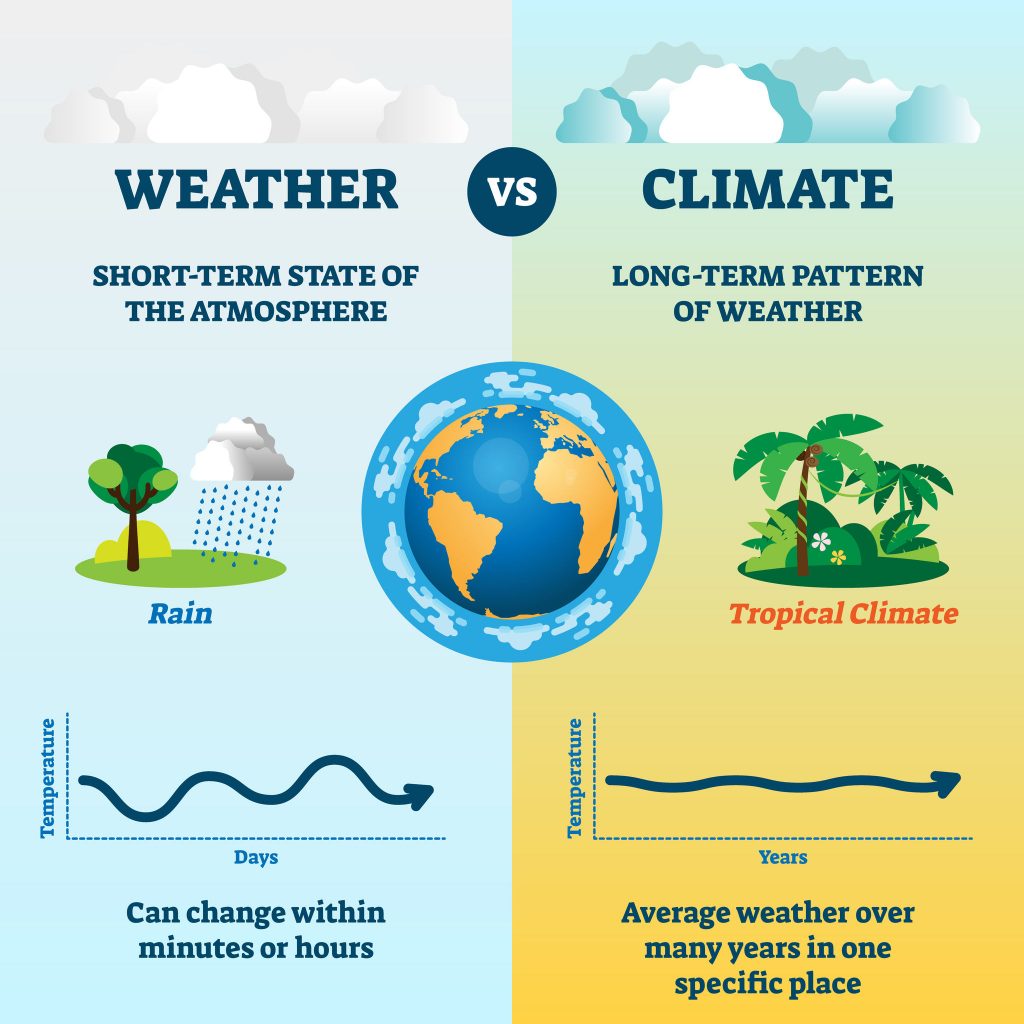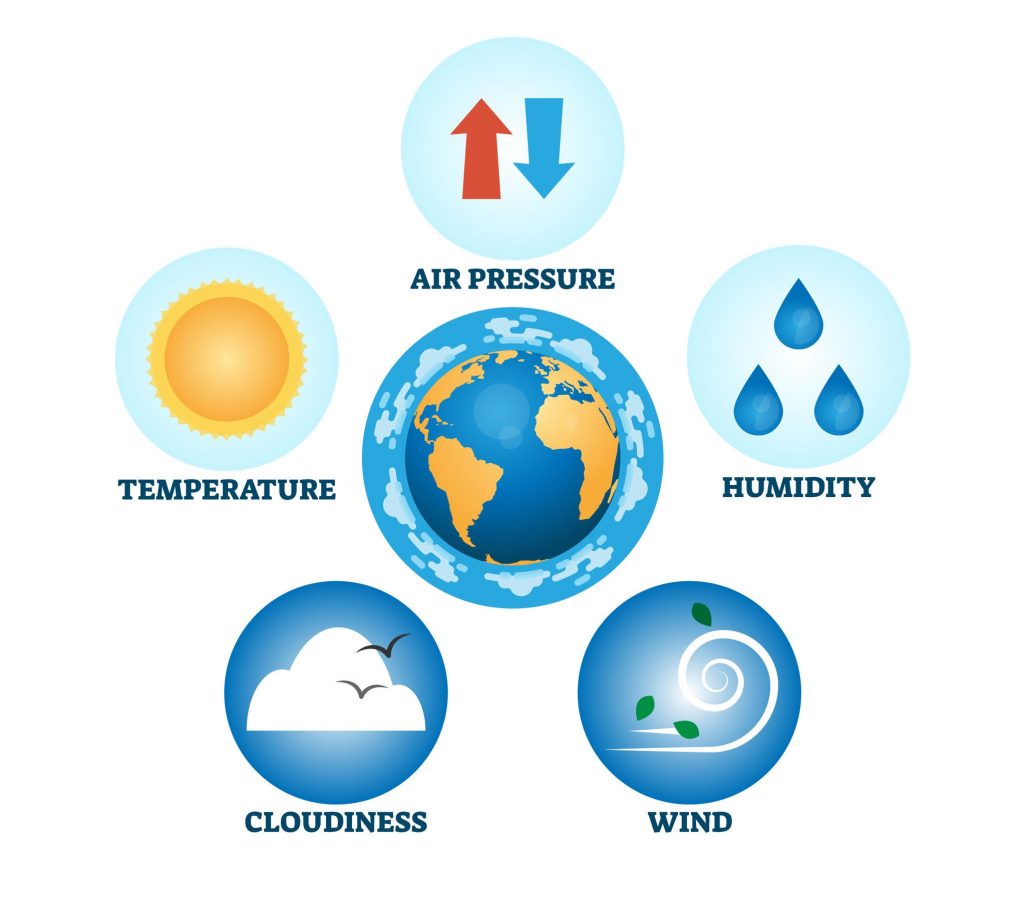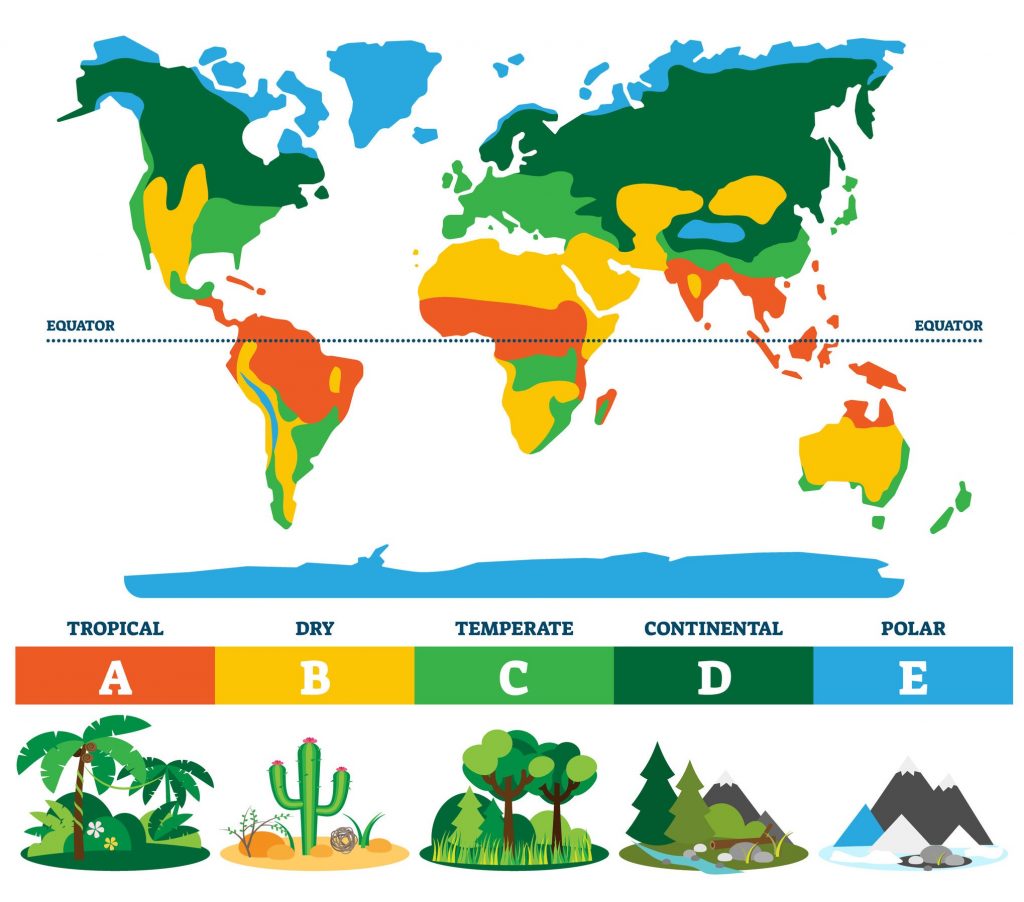What is the difference between Climate and weather? The climate is based on long term trends and is measured over years whereas weather is short term and changes rapidly.

Climate is the averaging of atmospheric conditions over longer periods of time. Weather describes the state of the atmosphere, the degree to which it is hot or cold, wet or dry, calm or stormy, clear or cloudy. Weather generally refers to day-to-day temperature and precipitation activity. A region’s weather patterns, usually tracked for at least 30 years, are considered its climate.
The term weather describes the state of the atmosphere at a given point in time and geographic location. Temperature, the amount and form of airborne moisture, cloudiness, and strength of wind are all different components of our weather. The interaction between air pressure, humidity, wind, cloudiness and temperature impact on weather conditions.

Climate Types
Climate types based on the Köppen climate classification is used to denote different climate regions on Earth based on local vegetation. The system divides the world into five climate zones based on criteria, usually temperature, which allows for different vegetation growth. The Köppen climate classification system is one of the most common climate classification systems in the world. The classification scheme includes tropical, dry, temperate, continental and polar zones.

The amount of water in our environment is influenced by the climate. Across Australia, there are six broad climate zones. The climate in Australia, like the rest of the world, is changing due to global warming; our climate has always changed, but it is happening much faster than ever before. This change is causing more extreme weather, like floods and droughts.
Find out more with ABC Education

